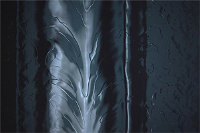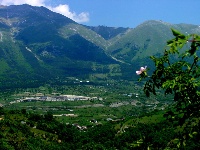Letters of Intent were submitted

The three submitted LOIs are being read by the Research Director and his advisory group. |
The three ILC detector concept groups, ILD, SiD and 4th, submitted their Letters of Intent (LOIs) by the due date, 31 March. Having observed the intense efforts during the past few months, I sincerely congratulate these groups for having completed the document in time. Tremendous amount of work and discussions have been done successfully since their expressions of interest about one year ago. These documents are made public already and can be obtained through the ILC detector web page. Each group has a main LOI, which had to be limited in length, and a set of supporting documents which describe more details behind the LOI. A large number of physicists of universities and laboratories signed the LOIs, which shows the vast interest and contribution of many people in the entire community over the world.
Read more...
-- Sakue Yamada
Research Director's Report Archive |
 |
|
|
 |
Upcoming meetings, conferences, workshops
Joint ACFA Physics and Detector Workshop and GDE Meeting on International Linear Collider
(TILC09)
Tsukuba, Japan
17-21 April 2009
Particle Accelerator Conference 2009 (PAC09)
Vancouver, Canada
4-8 May 2009
11th European Symposium on Semiconductor Detectors
Wildbad Kreuth Conference Center, Bavaria, Germany
7-11 June 2009
ILC-CLIC LET Beam Dynamics Workshop at CERN
CERN, Switzerland
23-25 June 2009
Upcoming schools
Terascale Monte Carlo school 2009
DESY Hamburg, Germany
20-24 April 2009
School on Calorimetry at the International Linear Collider
China Center of Advanced Science and Technology, Beijing, China
22-26 April 2009
|
|
|
GDE Meetings calendar
View complete ILC calendar
|
|
|
 |
ILC technology gets awarded

A smooth welding pattern inside of the DESY 9-cell cavity by Kyoto Camera |
On 23 March, the 2008 Nishikawa Award Ceremony was held in Tokyo, and awards were given to three ILC scientists: Yoshihisa Iwashita (Kyoto University), Hitoshi Hayano (KEK) and Yujiro Tajima (Toshiba Co., Ltd).
Read more...
-- Rika Takahashi
|
 |
|
|
 |
From Wired Science
12 April 2009
Next-Gen Atom Smashers: Smaller, Cheaper and Super Powerful
...Building bigger proton accelerators, such as Fermilab's Tevatron in Illinois and the Large Hadron Collider in Europe, is still possible because protons can be accelerated to very high energies in a circle. But the highest-energy electrons need linear tracks such as that of the SLAC National Accelerator Laboratory or the proposed International Linear Collider.
Read more... |
|
From New Scientist
10 April 2009
Is dark energy getting weaker?
AFTER billions of years of runaway expansion, is the universe starting to slow down? A new analysis of nearby supernovae suggests space might not be expanding as quickly as it once was, a tantalising hint that the source of dark energy may be more exotic than we thought.
Read more... |
|
From Physics Today
8 April 2009
Gran Sasso laboratory undamaged in L'Aquila earthquake
Eugenio Coccia, the director of Italy's Gran Sasso National Laboratory is, reporting that the facility is undamaged by the recent earthquake.
Read more... |
|
From New Scientist
8 April 2009
Inside the tangled world of string theory
Edward Witten, a leading architect of string theory, works at the cutting edge of mathematics and physics in his quest for a "theory of everything". Matthew Chalmers met up with him to ask how it feels to work in an area so rarefied that it's a problem simply conveying to other people what he's up to.
Read more... |
|
|
 |
Gran Sasso National Laboratory survives the Italian earthquake

Aerial view of the Gran Sasso Mountain and external laboratories |
Last week a major earthquake struck Italy about 10 kilometres from the Laboratori Nazionali del Gran Sasso (Gran Sasso National Laboratory). The inhabitants of the city of L'Aquila nearby the laboratory suffered numerous injuries and loss of lives, as well as extensive damage to buildings, homes and historic structures. I know L’Aquila very well, having stayed there many times while I was performing an experiment at the Gran Sasso National Laboratory. I feel very badly for the friendly people of L’Aquila and I hope there will be a rapid recovery and rebuilding of this charming old Italian city. The Gran Sasso National Laboratory, the most ambitious deep underground research facility in the world, suffered no significant damage, and for that we can be thankful.
Read more...
-- Barry Barish
Director's Corner Archive |
 |
|
|
 |
 |
|
|
 |
Register for Linear Collider Physics School
The registration is open for the Linear Collider Physics School 2009
in Ambleside, UK, from 17 to 23 August. The organisers encourage students and young researches to register. A few bursaries are available.
The registration deadline is 1 May 2009.
ILC Note
2009-050
Functional Requirements on the Design of the Detectors and the Interaction Region of an e+e– Linear Collider with a Push-Pull Arrangement of Detectors
EUROTeV Reports
2008-075
Studies of Selected Failure Modes in the ILC and CLIC Linear Colliders
2008-076
Halo and Tail Generation Computer Model and Studies for Linear Colliders
2008-077
Usability Review Report of GANMVL version 2.2
|
|

